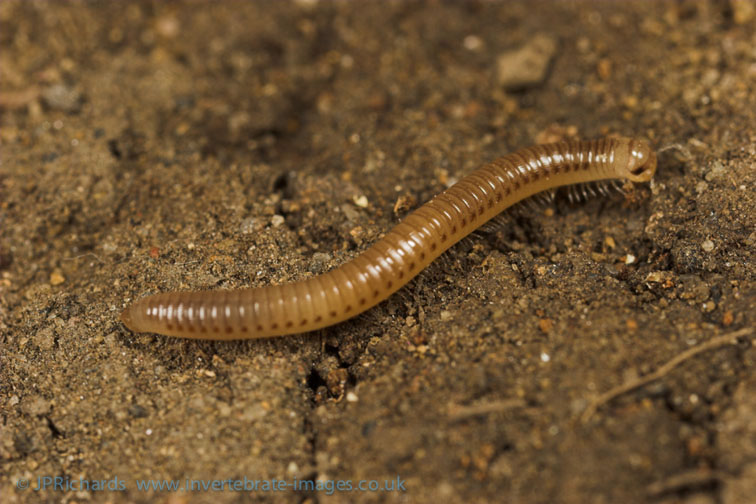Allajulus nitidus (Verhoeff, 1891)
Synonyms
Status:
- GB IUCN status: Least Concern
- GB rarity status: Nationally Scarce
ID Difficulty
Identification
This is a poorly pigmented species, typically tan or light brown with contrasting dark brown ozadenes. It has a strongly projecting pointed telson (tail) and therefore could be confused with species such as Julus scandinavius, Ophyiulus pilosus, Leptoiulus belgicus or an immature Tachypodoiulus niger (but these species are typically much more darkly pigmented).
Distribution and Habitat
This is a widespread but uncommon species that appears to be more frequent in the east of Britain. It has not been recorded from Ireland.
It is a common, central European species recorded from most countries north of the Alps. Kime (1999) suggests the species is probably at the limits of its range in Britain which may explain its synanthropic tendencies as well as its absence from Ireland and its scarcity in the west.
Habitat
Analysis of the recording scheme habitat data suggests a strong association with synanthropic habitats, especially cultivated sites, open spaces and churchyards. The species has been found also in semi-natural woodlands in Britain (25% of records of the species) and almost all of these records have been from calcareous soils. However, due to the relative scarcity of the species, the analysis does not suggest a strong association despite 79% of records being from calcareous soils. The British data give no indication of a preference for clay soils. In Europe it is a subterranean species typically associated with deciduous woodland on base-rich, clay soils but is also found on light, acidic soils and in pine woodland (Kime, 2004).
Phenology
Both males and females survive for several years after maturing (Blower & Miller, 1977) hence adults may be found throughout the year. However its habit of burrowing in adverse conditions may make it difficult to find in especially cold or dry conditions.
This species account is based on Lee (2006).
Links
MilliBase - Global catalogue of Millipedes: https://millibase.org/aphia.php?p=taxdetails&id=1025086






